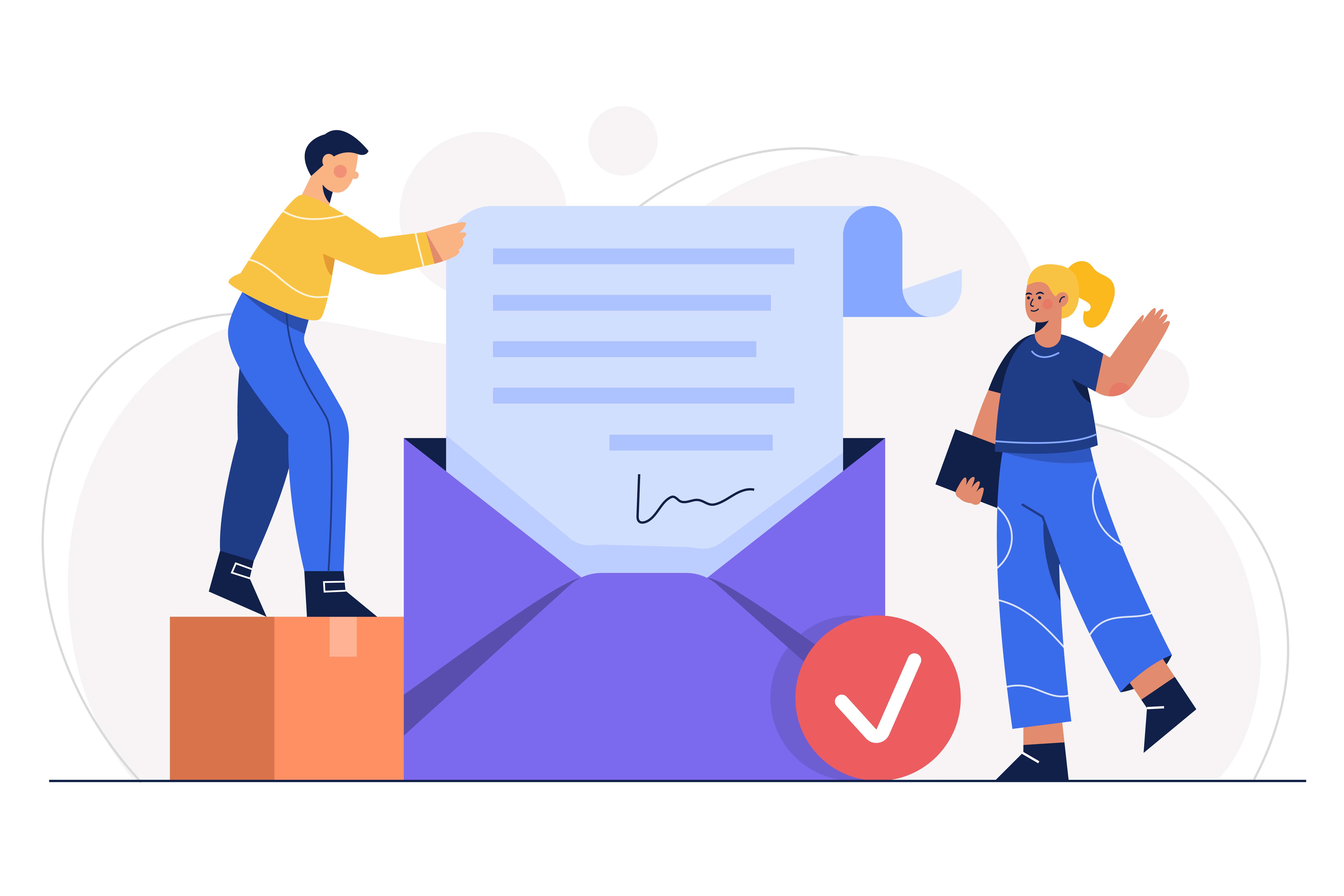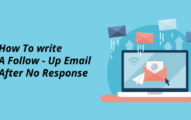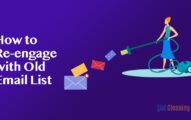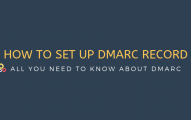
Marketers spend hours planning each campaign. First, we create the best copy; then, we ponder spacing, fonts, and colors. Finally, we discuss our personas, target audience, and messaging. But, do you know how to Boost Inbox Placement?
Despite all the work into email marketing, nothing is more disappointing than finding out that the message didn’t reach our subscribers. No matter how meticulously we plan and develop our campaigns, if an email doesn’t get to the inbox, subscribers won’t appreciate it, nor will you see any ROI.
One of the most misunderstood and baffling aspects of sending great emails is getting it to the inbox. Marketers frequently confuse delivery with deliverability. Although the terms are occasionally used interchangeably, they can have very distinct meanings. So let’s see how we can distinguish them.
Email Delivery vs. Email Deliverability
Let’s get down to the basics. What are we discussing here, exactly?
These questions will help you understand the difference between delivery & deliverability, ” and Does it reach the inbox?
We’ll explain further by diving into each of these topics below.
Email Delivery
“Can a receiver receive your message?”
This is the term that indicates whether or not the receiver has accepted your email. It comes before the inbox and spam folder distinctions, so make sure you don’t mix the two. Your email will not be delivered if it doesn’t reach an inbox.
The receiver will accept the message that you have sent. Is the email address or domain correct? Is your IP address blocked or what?
Imagine an email that isn’t actually a person but a busy business traveler who is on her way to a conference. A successful delivery would indicate that the traveler arrived at her destination airport. After proving her identity with a ticket, passport, and security checks at the airport, she was allowed to proceed to security and check in to her departure gate.
Also, if an email is delivered successfully, it means that it reached the intended recipient’s mailbox. This could be either the inbox or the spam folder.
Email Deliverability
“Is it in the inbox?”
It is the term used to describe where a message will end up after it has been delivered. straightforwardly, deliverability determines whether your email will land either in the spam folder or in the inbox.
Let’s go back to the travel metaphor. The traveler has passed security and is now ready to go to her destination.
Deliverability refers to the destination of the traveler’s final flight. Most travelers make it safely to their departure gate (delivery), but severe weather or other mishaps can cause them to be rerouted from Dallas to Houston instead of to the conference destination (deliverability).
Three parts of Deliverability:
- Identification — This is protocols’ list that will prove you are who and what you claim to be when you send an email. These include DomainKeys Identified Mail (DKIM), Sender Policy Framework (SPF), DomainKeys Identified Email (DKIM), Domain-Based Message Authentication Reporting, and Conformance (DMARC).
- Each term functions as a passport, license, or background check. Is Jack Doe the upstate New York lawyer? Is Jack Doe the college swim coach from Southern California?
- Reputation — A score that indicates how trustworthy your email is. While each organization and ISP might have different scores, generating positive subscriber behavior (which is users marking you as a trusted sending party) is the best way of boosting your reputation.
- Content — Does your message speak to your target audience? Is your email experience lacking in inspiration?
- Your email’s deliverability can be affected by your previous sending habits. Consider it from the perspective of your subscribers: Imagine receiving an email with the subject “MAKE DOLLARS TODAY!” It’s not appealing to open an email with such a subject line. To make the greatest impact, tailor your message to your subscribers’ interests.
Don’t be nervous
Most emails land in the spam folder or inbox because of their reputation and identification. Imagine waiting in line at the airport security screening. You won’t ever get past the first desk if you don’t have your ticket. Likewise, you can’t go anywhere if your name is on the no-fly list.
Delivery problems can indicate that your infrastructure is not working properly, you have incorrect email addresses, or received negative user interaction. On the other hand, delivery issues indicate that your permissions and sending practices may be outdated, not legal, or that subscribers aren’t interested in your content.
Don’t be alarmed if these descriptions make you nervous. We’ll be discussing how to increase your email deliverability to ensure subscribers enjoy every delivery.
6 Easiest Tweaks to Boost Inbox Placement
Now you know the difference between email delivery vs. deliverability and also what importance does inbox placement hold for your marketing strategy? These are the best practices that will ensure your messages reach subscribers’ inboxes.
1. Configure a clean email list.
The clean email list is one of the most important factors to Boost Inbox Placement. Permission-based marketing is important, but permission can expire with email marketing. Inactive subscribers can leave a deeply negative impact on your deliverability, as they may be affecting your engagement metrics. You might consider automating a confirmation campaign or removing inactive subscribers after a certain time.
You may be experiencing delivery issues if your list contains spam traps. These spam traps look just like real addresses but they are spammers. It can be a sign of poor list hygiene, spammy acquisition practices (e.g., renting or buying lists), or sending to one.
You can declutter your email list by regularly removing invalid emails and confirming inactive subscribers.
2. Provide easy unsubscribe options.
Unsubscribes are often viewed as a negative sign. However, there is no evidence that they affect deliverability. It can be beneficial to increase subscriber engagement and clean out your email list.
Targeted campaigns are undoubtedly more likely to be opened and clicked by people who wish to receive your email. Besides decreasing bounce rate, this will increase click rates. If users want to unsubscribe, make it easy. You can add a link to your email’s bottom portion.
You should not hide the unsubscribe. It should be visible in every email, regardless of whether it is in the footer or the top. You can streamline the unsubscribe process to make it one step. Otherwise, you will lose the battle against the “report as spam” flag.
3. Make your emails personal.
Subscribers and marketers often view spam differently. Subscribers think about spam in terms other than spam filter testing and algorithms. They consider relevance first. Is your content relevant to them?
This is the most important question you should ask yourself before clicking “send.” Make sure to check your copy for any errors or relevance.
Email is among the most personal channels a marketer has access to. Emails that resonate with your audience will not only improve your deliverability but will also increase reader engagement. Unfortunately, this won’t help you build better relationships with your target audience.
4. Add engaging text to emails.
Ensure that your email copy engages the reader when you send it. Your emails’ subject lines are the first impression. Make sure they are engaging and funny.
Most likely, your email subscribers are already fans of your company. Therefore, the email experience should be just as fun as all other things your customers love.
You may know what language makes customers feel connected with your brand. It will reflect your care about their needs beyond sales promotions.
5. Get the sending frequency and schedule right
To ensure that your email isn’t ignored, you need to set a consistent schedule. It is not worth sending emails if people can’t view them. Therefore, it is important to pick the right time to send your email to your target audience. Gather various statistics that help you in figuring out which is the perfect time when your audience is the most likely to check emails.
- The best time to send an email is usually in the afternoon on weekdays, as people are more active during normal working days than on weekends. If the target audience includes working women, the best time to send an email is in the afternoon on weekdays. If fieldworkers are the target audience, the best time is either the weekend or the night.
6. Check to see your emails’ legality.
In case you rely on email marketing software such as HubSpot, you can breathe a sigh of relief. Most email marketing software makes sure the emails being sent are compliant with web laws, such as GDPR. It is important to ensure that your emails are not in violation of any laws if you create them yourself.
These tips will help you improve the email marketing experience for your readers and yourself.
The difference between delivery and deliverability could be the missing link to transform your approach to email marketing. These practices will solidify that your emails are remembered by readers and reflect all of the work you’ve put into them.
But everything is waste without an email validator tool
Your email list is undoubtedly among your most valuable business assets. An email list is crucial for customer outreach, email marketing, and transactional emails. You can also use email list for paid advertising, social media marketing, and transactional emails as well.
Email addresses can be falsified, however. People often use fake email addresses to avoid spam marketing. Spam traps and bots can also damage your sender’s reputation more than incorrectly or misspelled emails. Unusable email addresses on your list can negatively impact almost every email marketing metric and reduce the effectiveness of your email marketing.
What can you do then?
Incorporate email validation into your email program. It instantly reduces bounce rates and protects the sender’s reputation. Email verifiers are important, but many marketers are still confused if they should use an email verifier or not. Email verifiers help eliminate junk emails and may be worthwhile for your business.
Take into account the many benefits that email verification can bring to your business.
Reasons to Use an Email Verifier
- Job changes
- Non-existent domains
- Change of email service providers (ESPs)
- Spam traps
- Catch-all addresses
- Syntax errors
- Wide variety of email verification options
- Improves ROI and saves money
Which are the most recommended email verification tools that support inbox placement?
In 2021, both novice and experienced marketers have access to a wide range of email verification tools. We have compiled a list of tools to help companies find the best email verification tool. You can use these tools as standalone products or integrate them into existing email security systems so that users can increase their email delivery and protect themselves from potential threats.
- MyEmailVerifier – First Email verification service on the planet to identify disabled users in yahoo/AOL.
- DeBounce – Accurate mailing list verification in preferred programming language, with affordability.
- Emailable – Simple and effective email list verifications. Perfect for entrepreneurs, bloggers, or anyone who sends email marketing newsletters
- ListWise – User-friendly interface, perfect for businesses receiving several new subscribers daily.
- ClearaList– Great email verification service for affordability.
- ZeroBounce – Full-featured email verification solution including API integrations aplenty.
- QuickEmailVerification – A quick solution that treats huge email lists with great pace and perfection.
- Clearout -Great for companies searching to access different users simultaneously for processing bulk emails.
- Bouncer– Highly affordable yet highly reliable tool that charges just $20 for 10,000 email address verifications.
- Email Validator – A very generous service. If you desire to clean your email list containing less than or equal to 1000 emails, you don’t need to purchase any credits.


